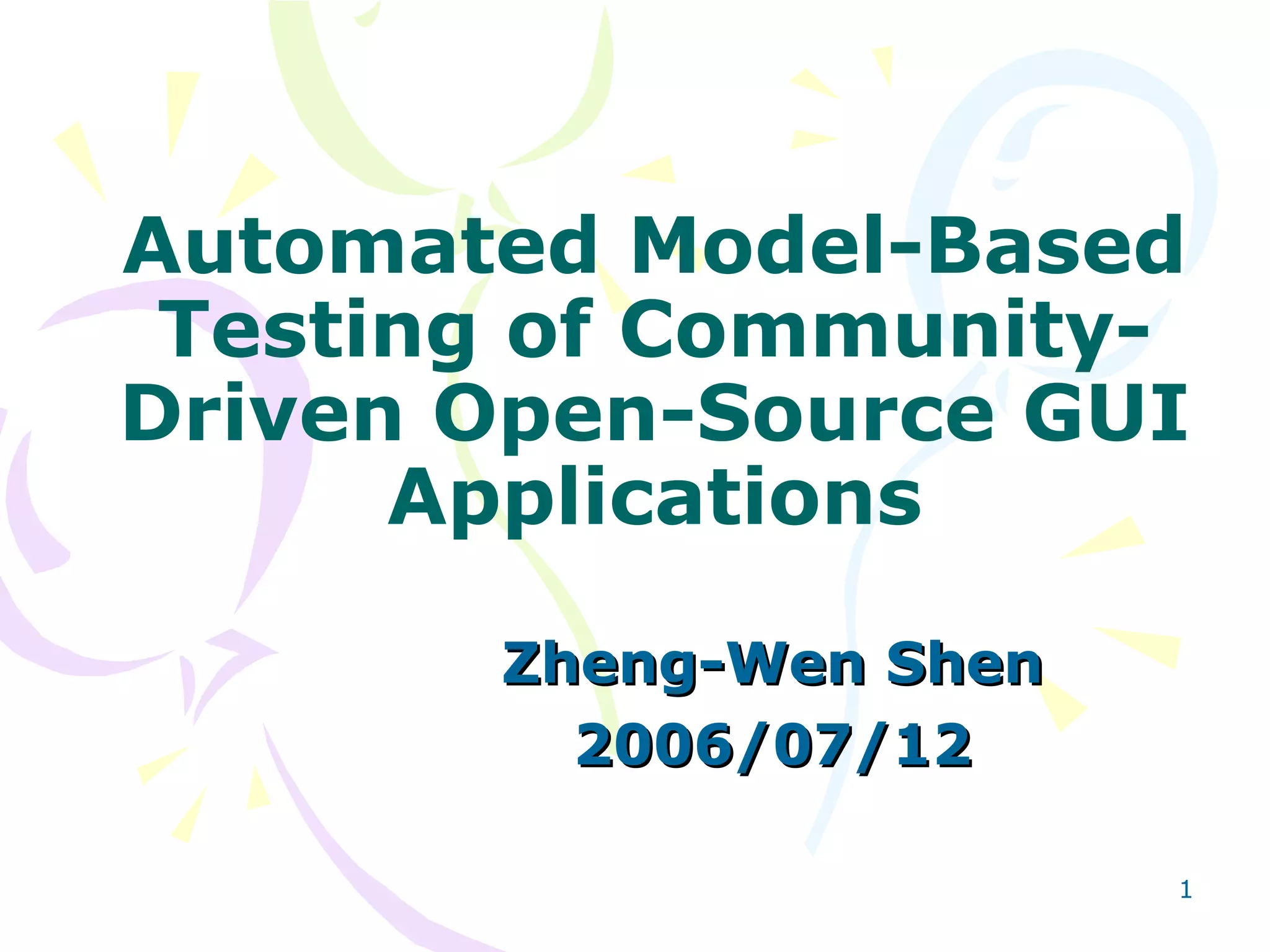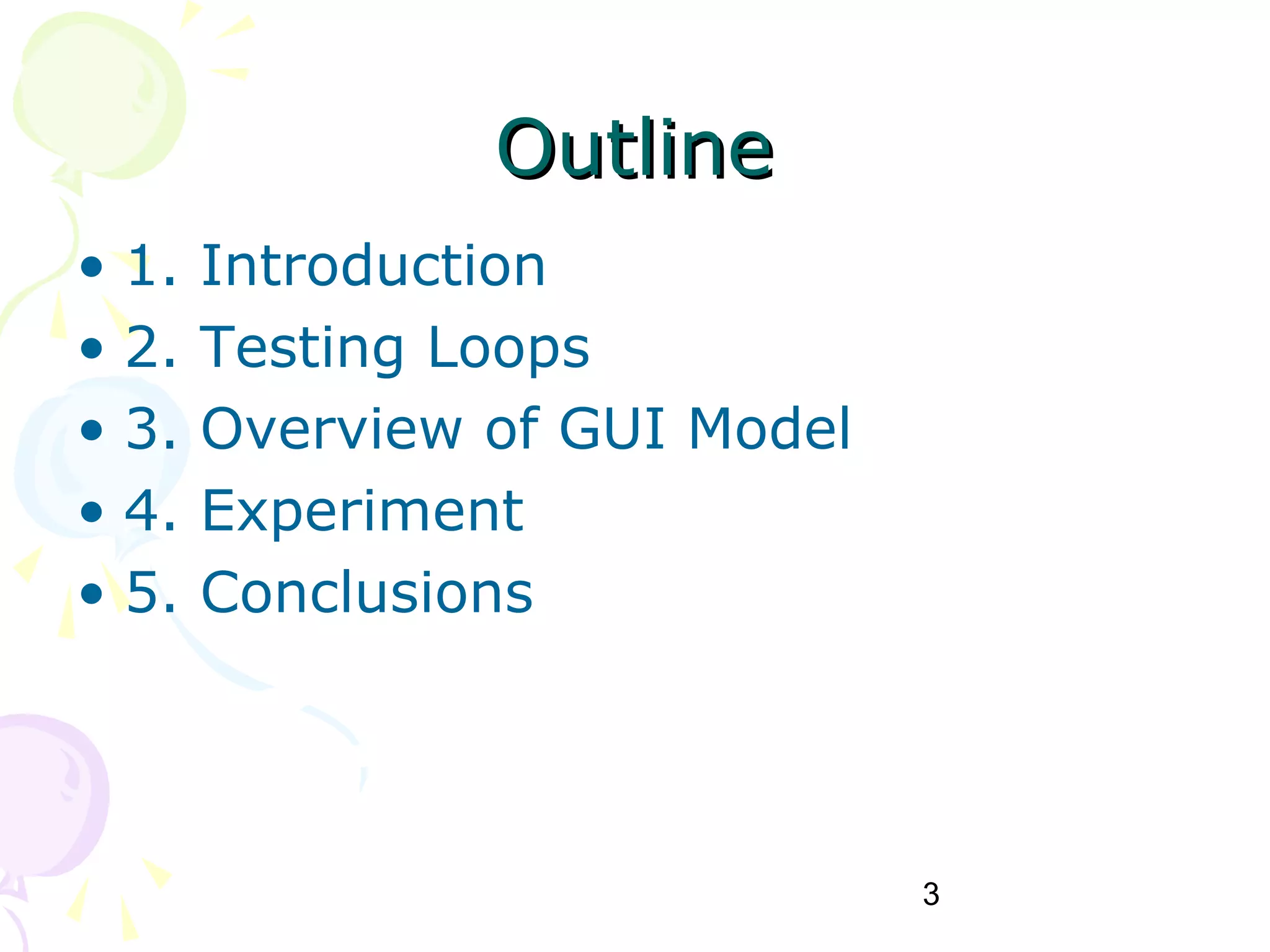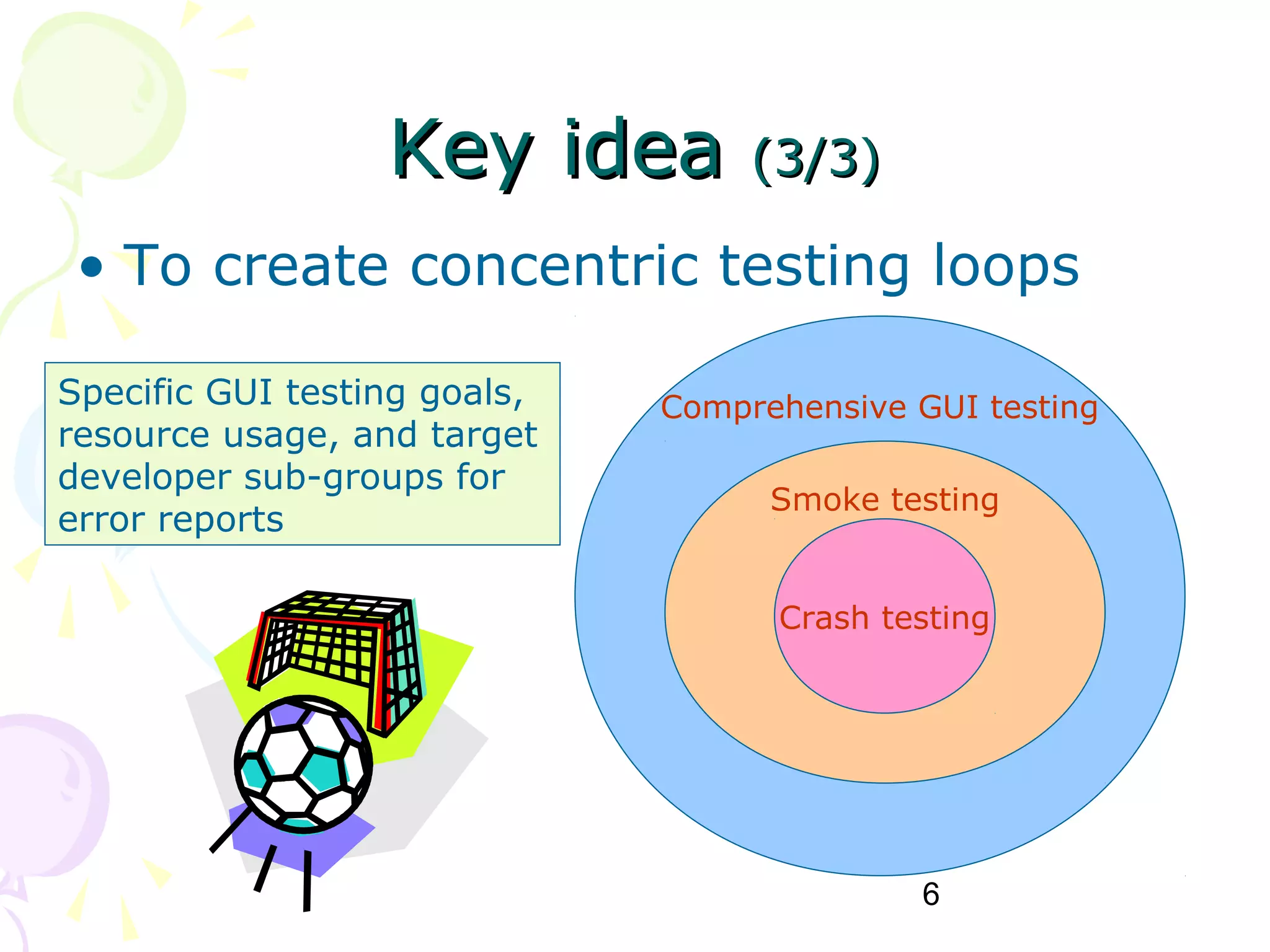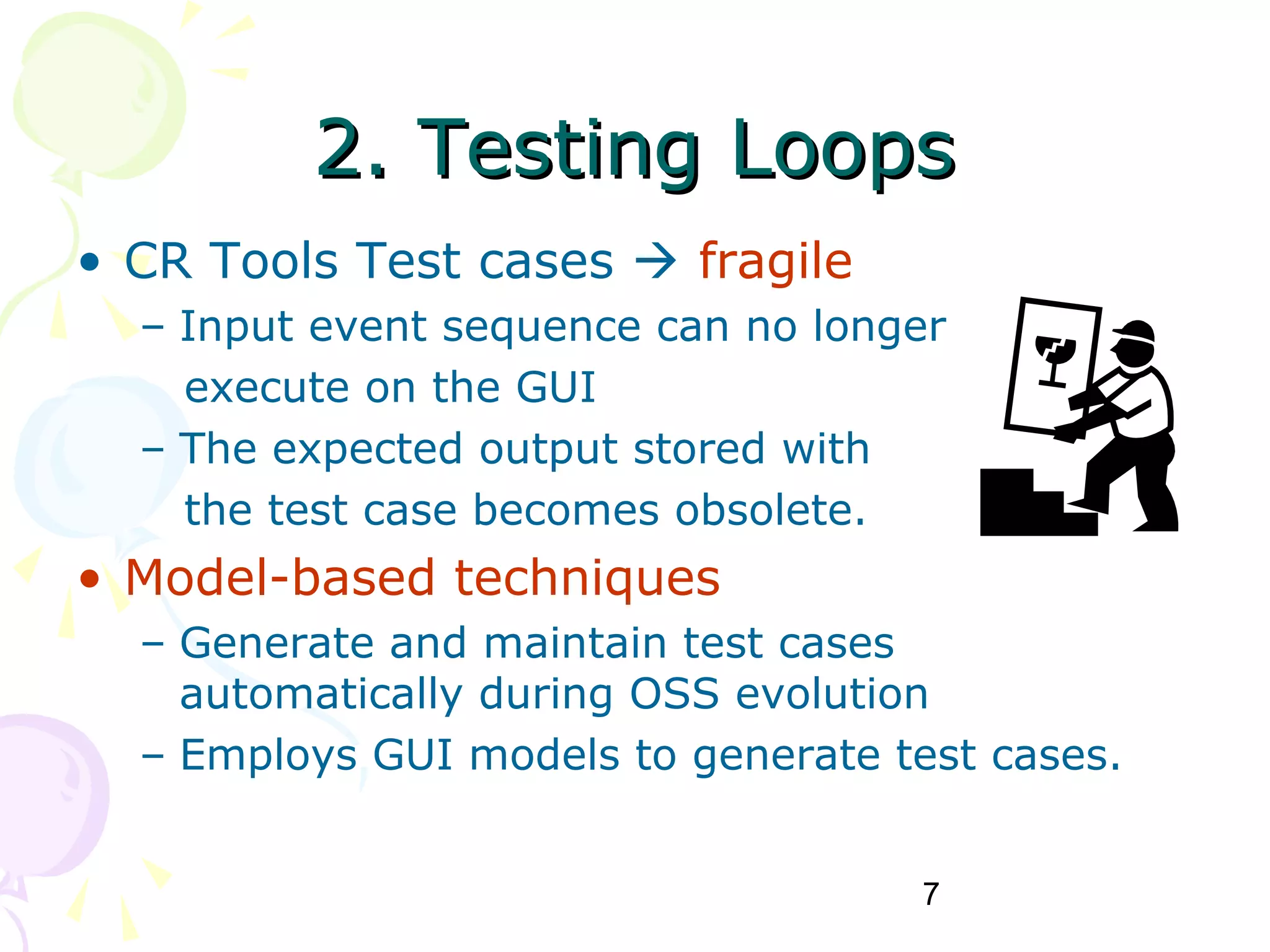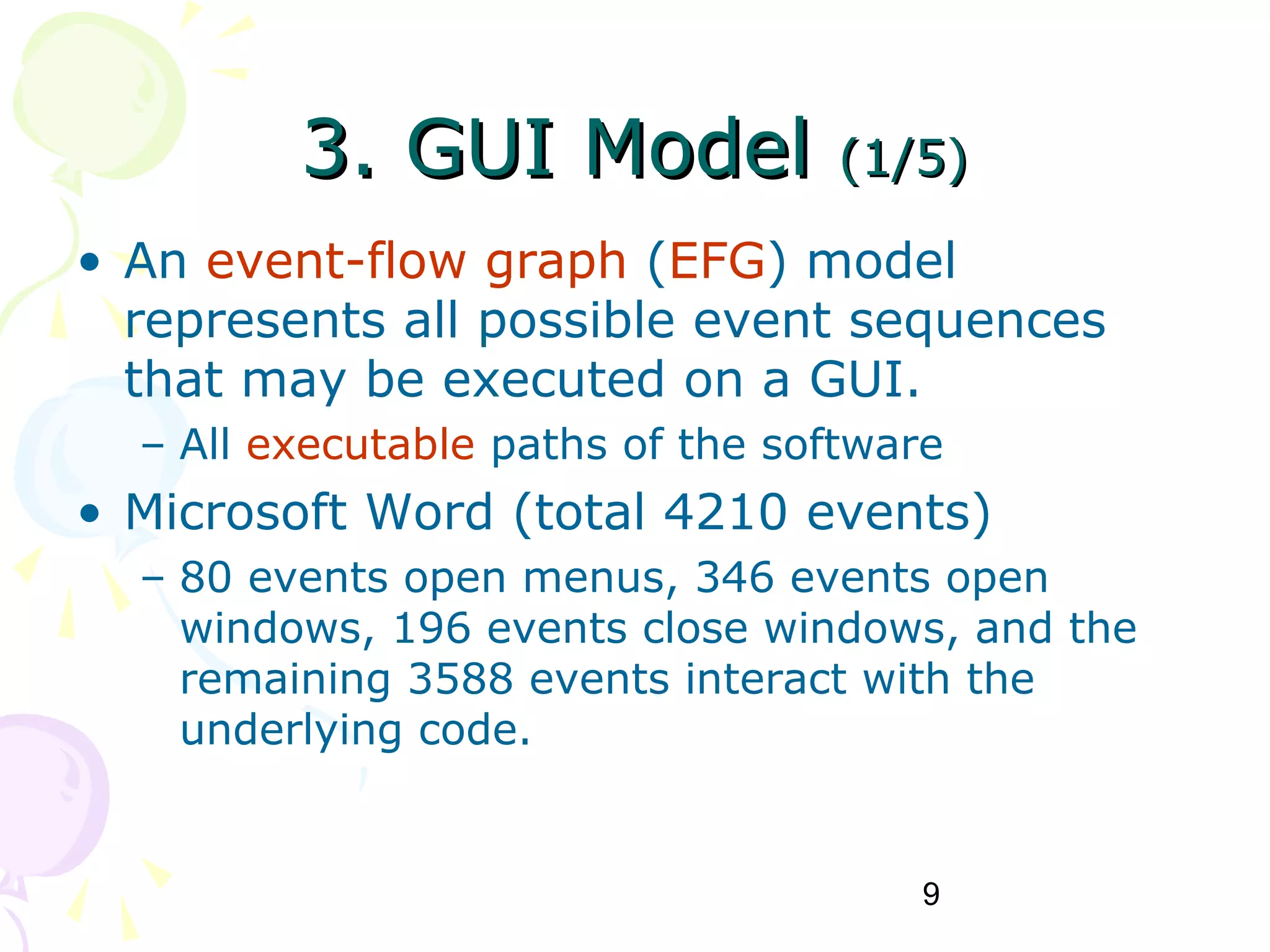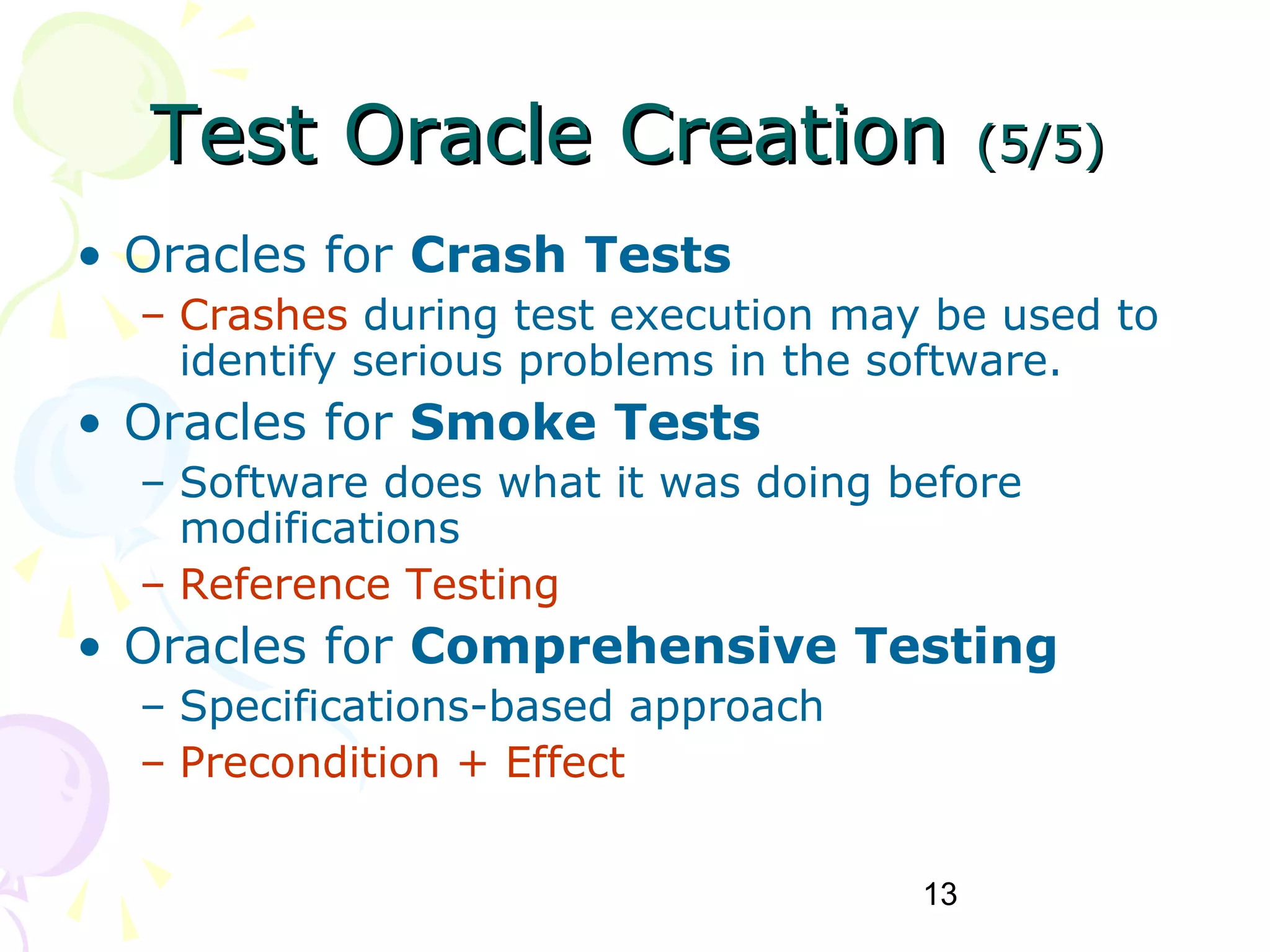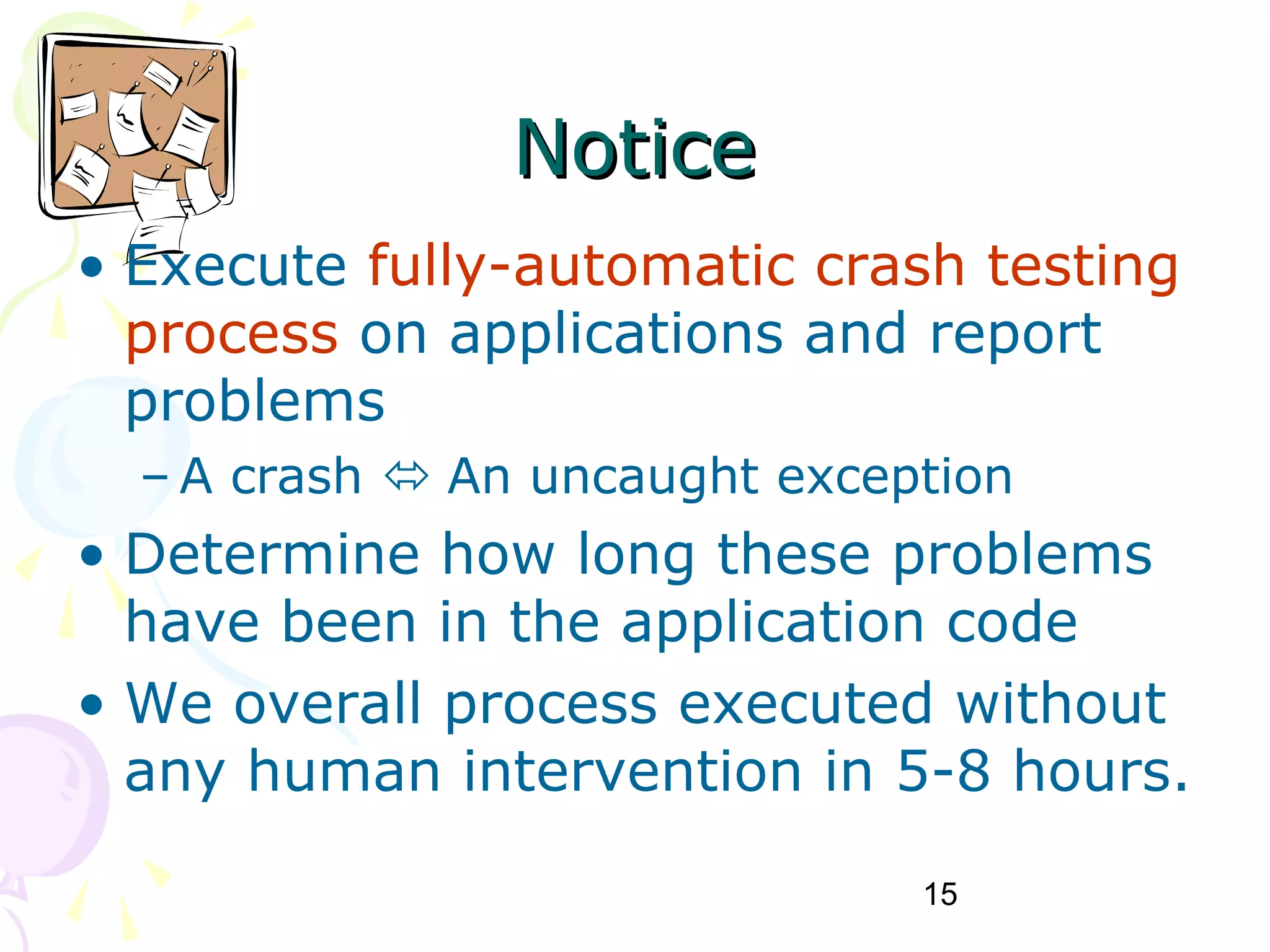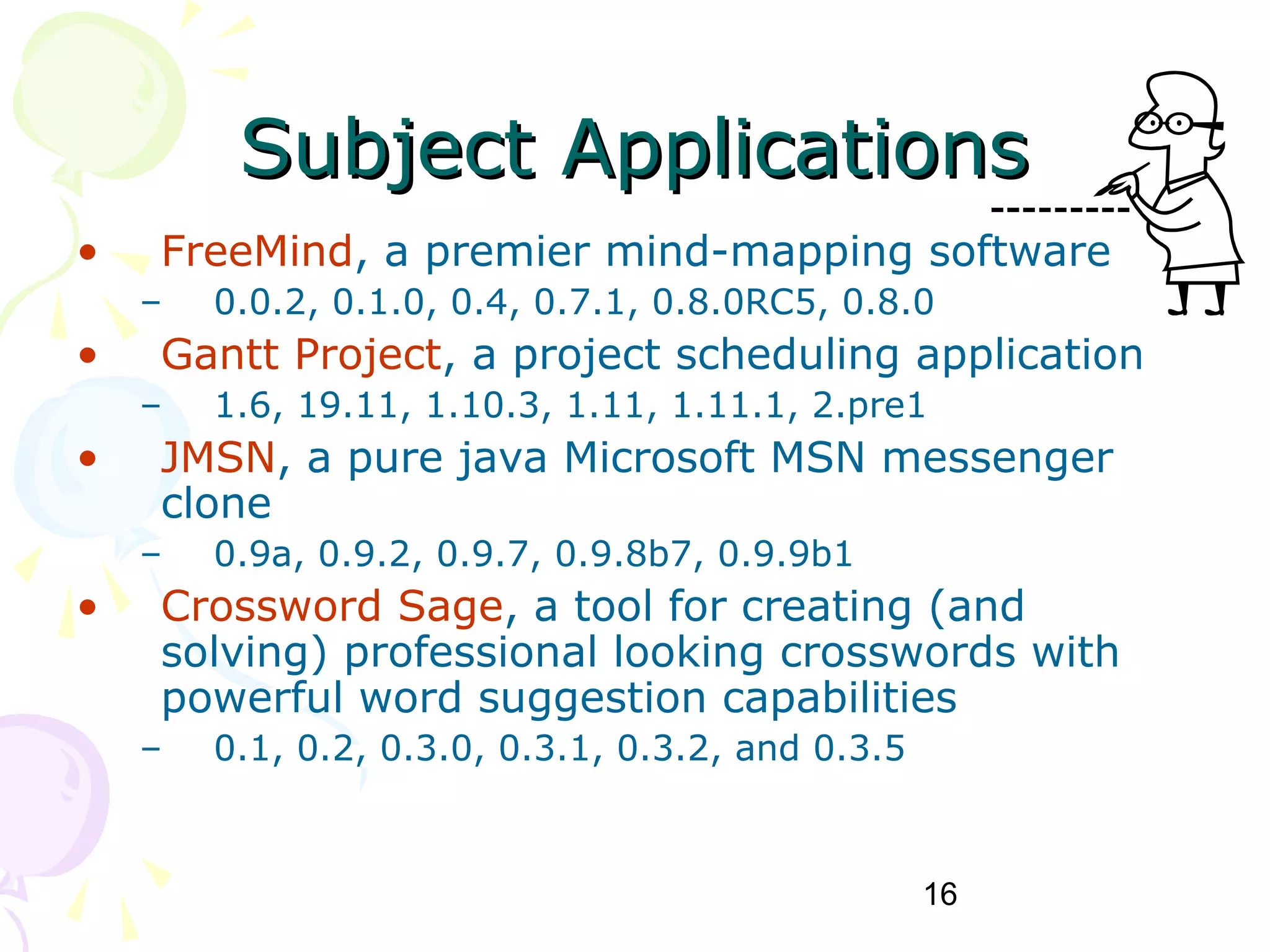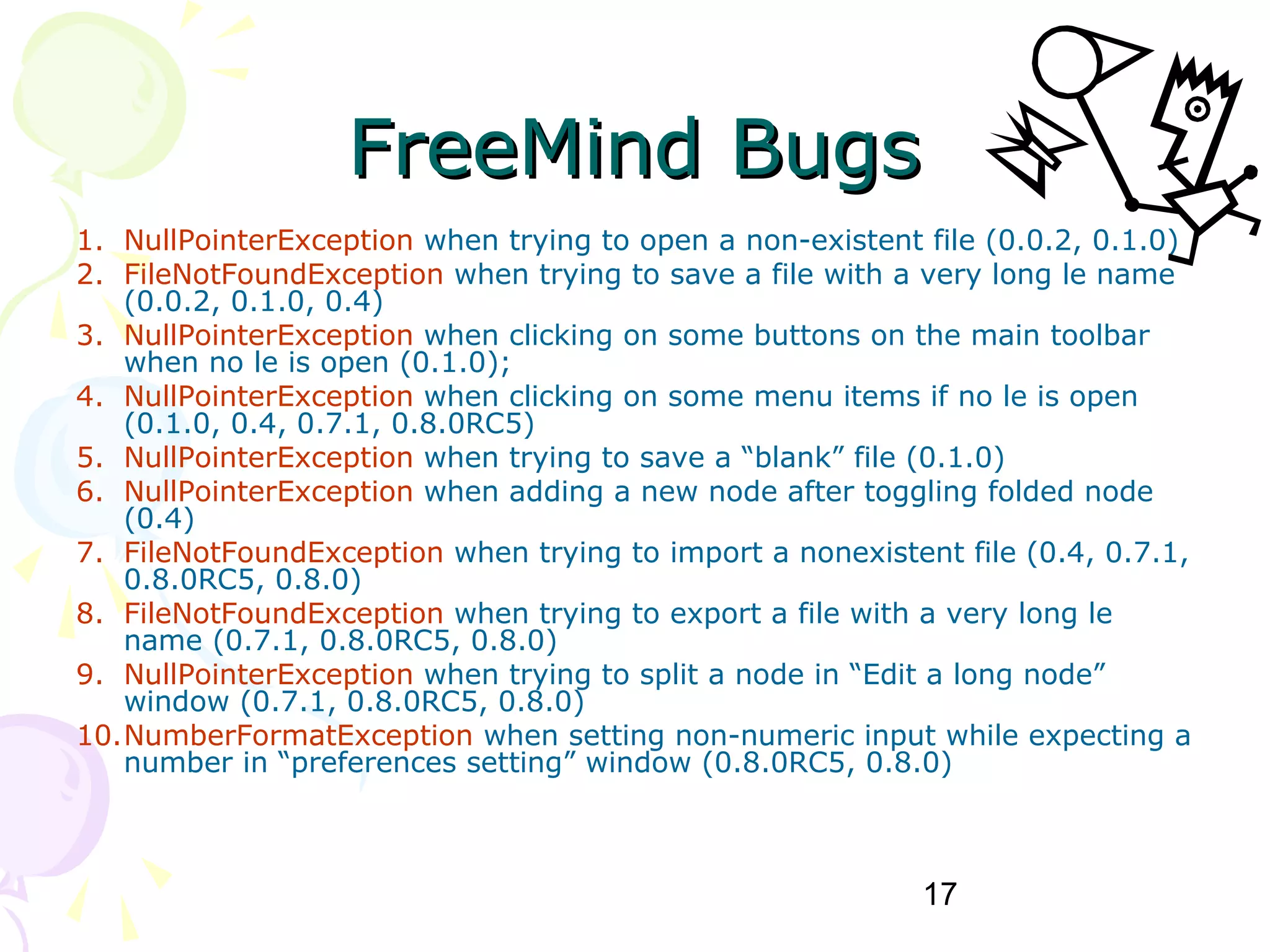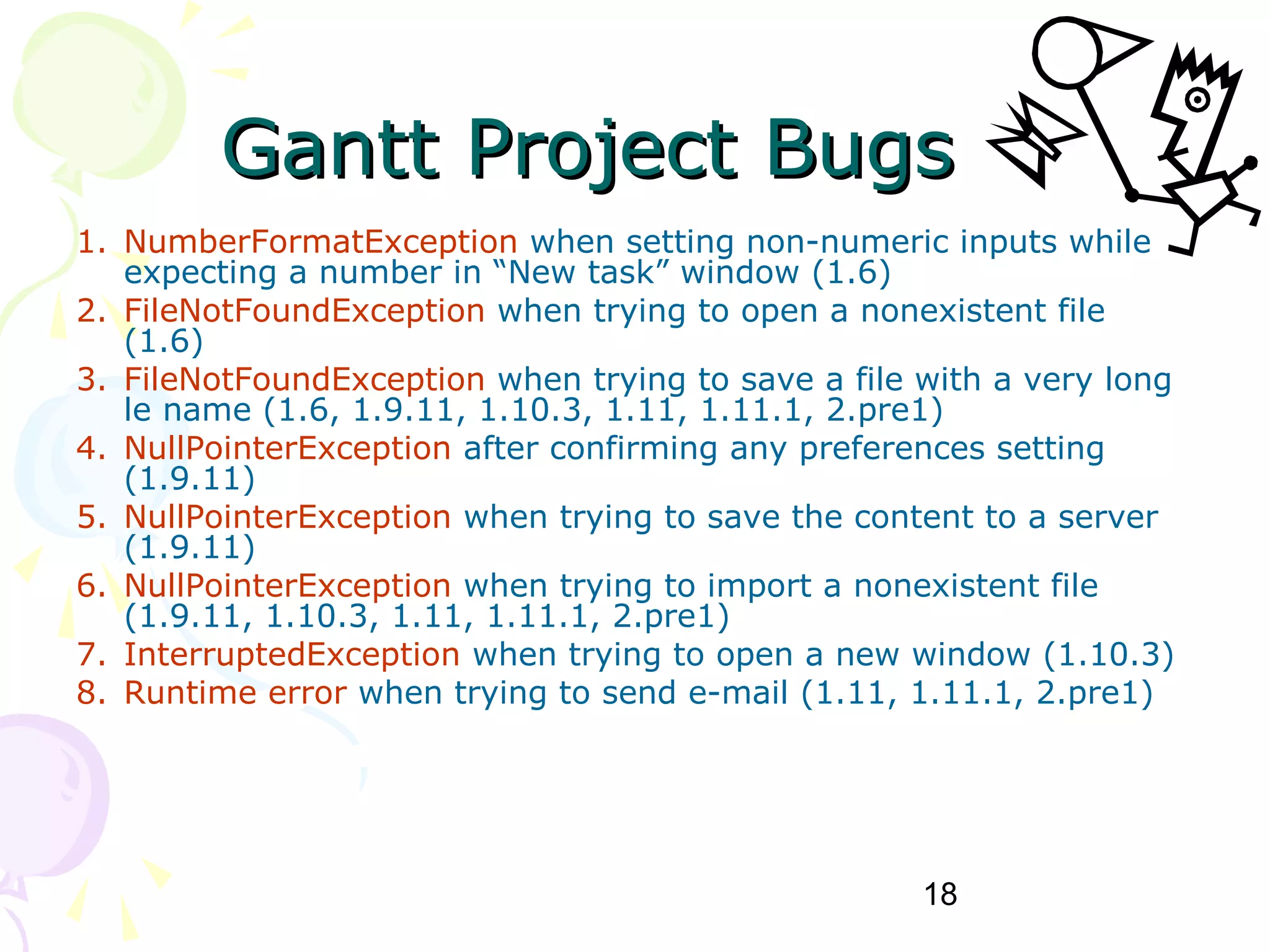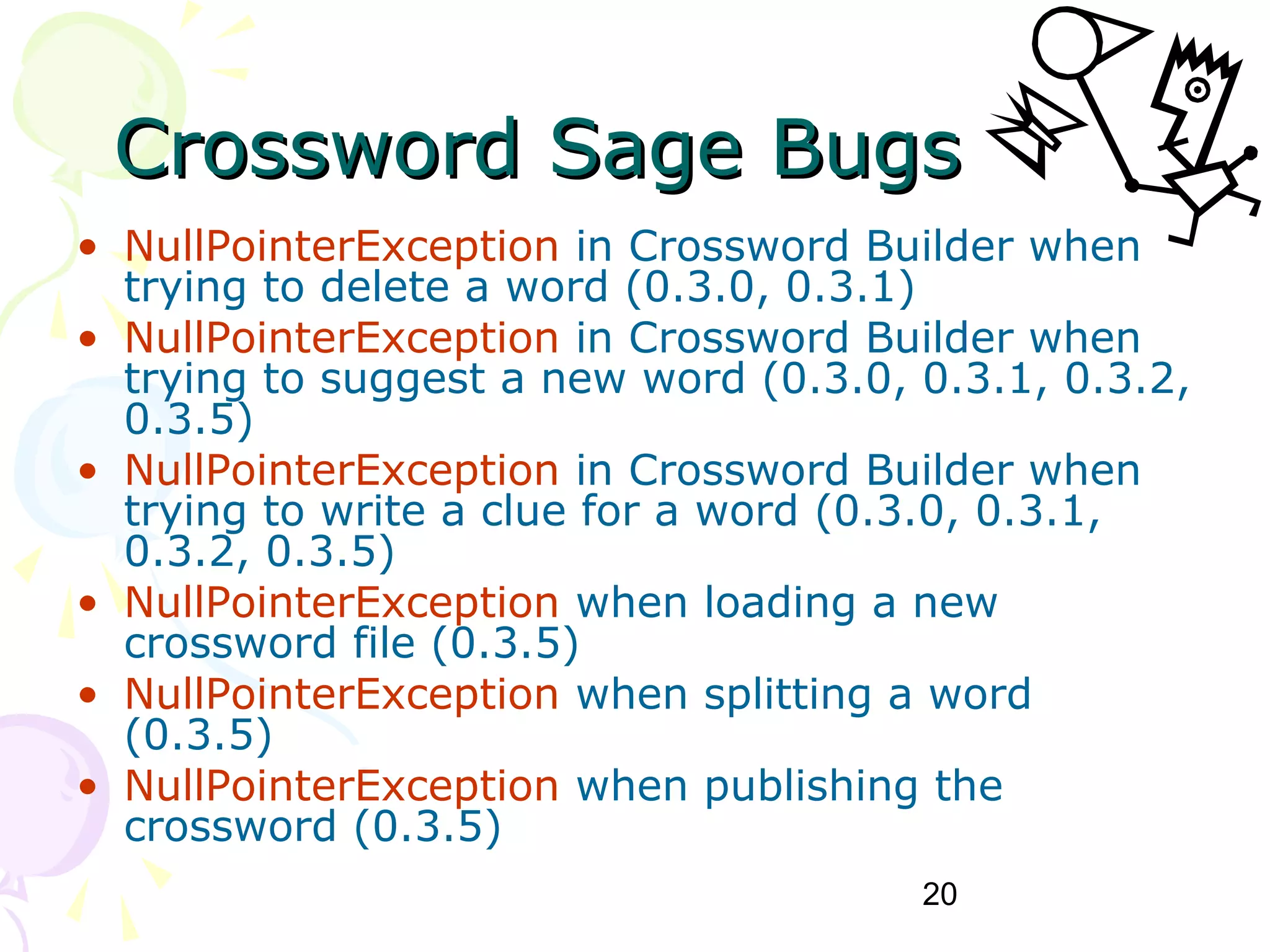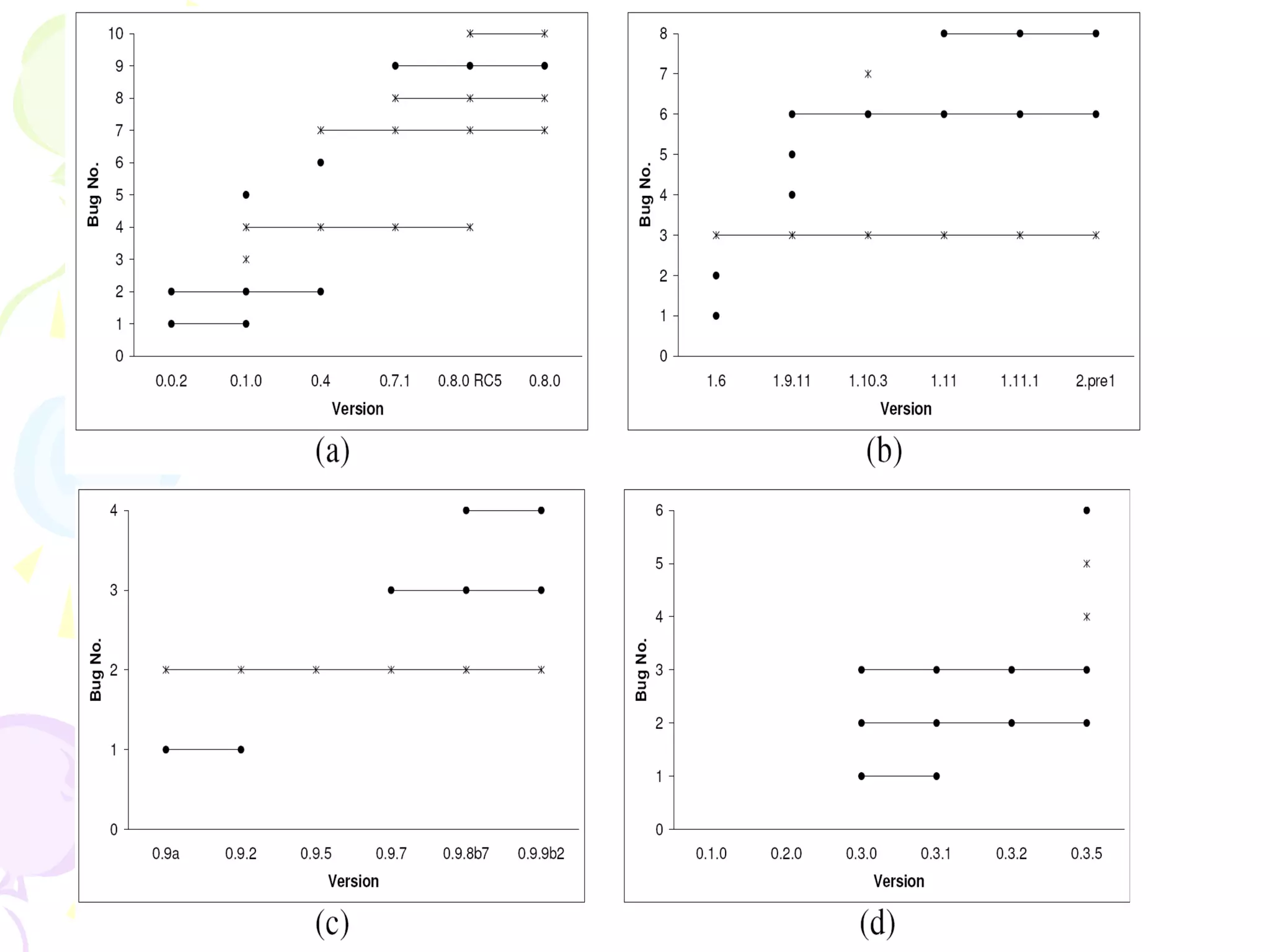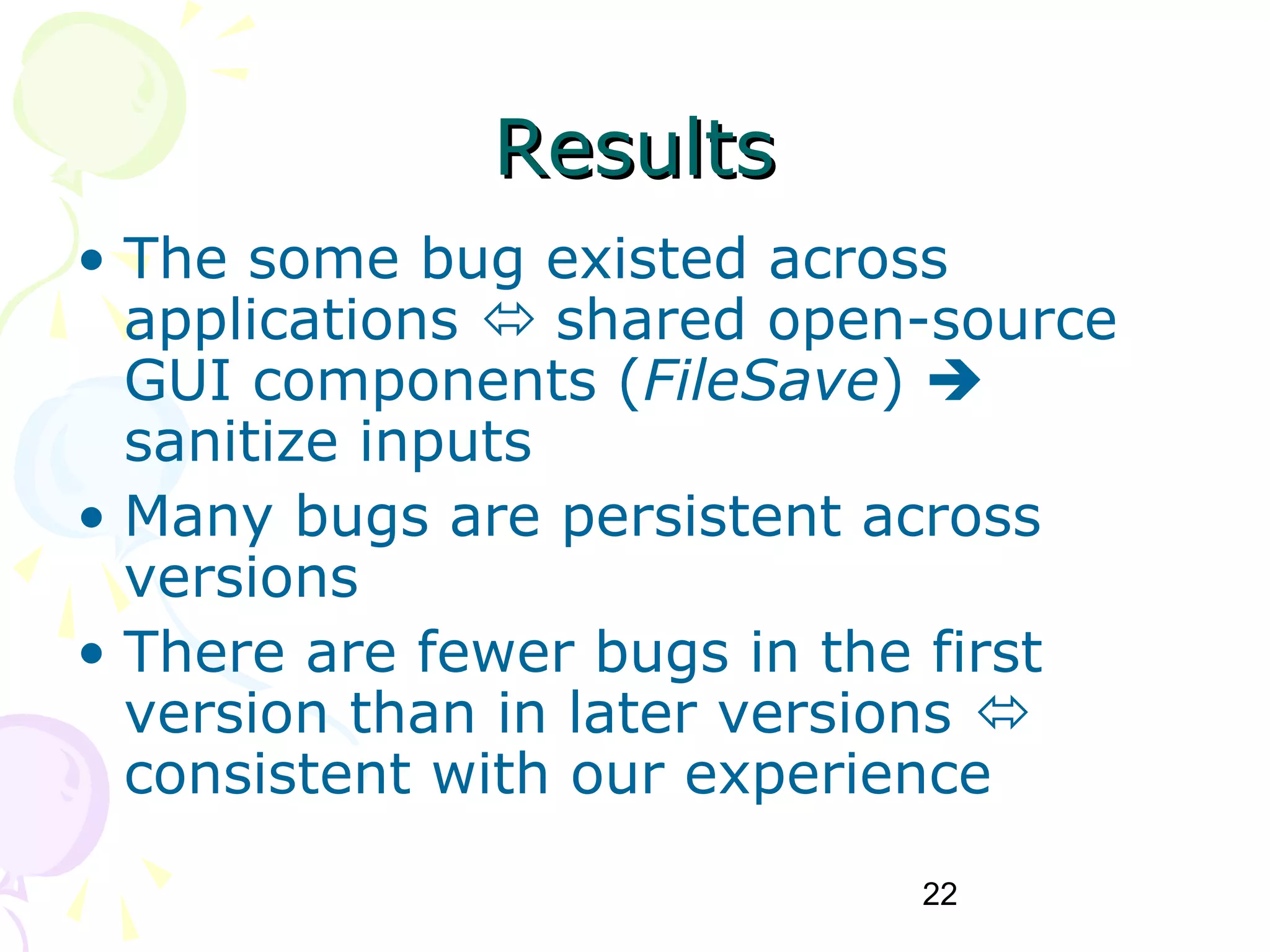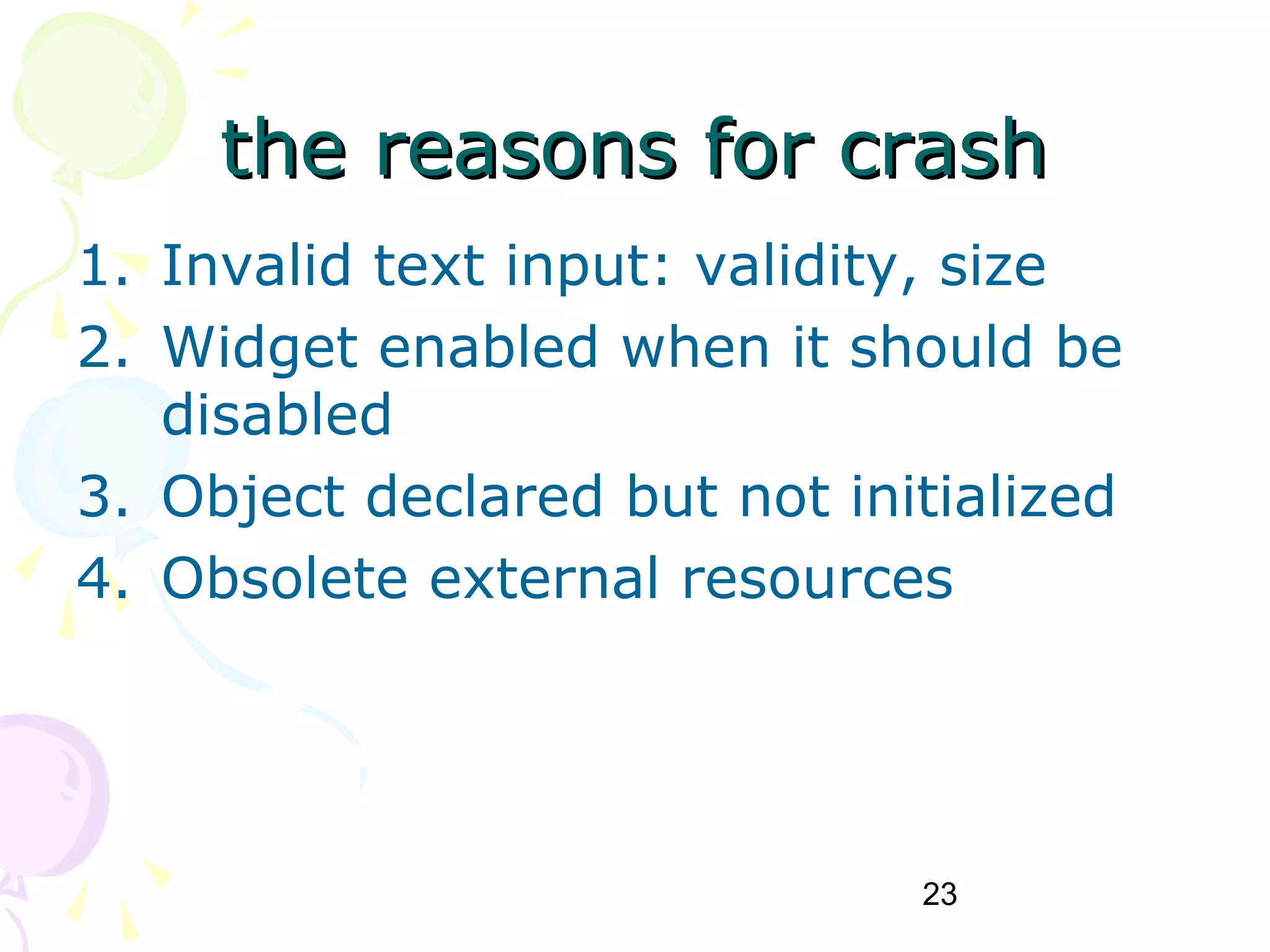1. The document proposes a model-based testing approach to test community-driven open-source GUI applications in an automated manner using concentric testing loops. 2. An event-flow graph model is used to represent all possible event sequences in the GUI and generate test cases. Tests are classified into smoke, crash, and comprehensive tests. 3. The approach was evaluated on four open-source applications, detecting bugs that persisted across multiple versions. The results demonstrate that resources can be better utilized through a loop-based testing approach for open-source GUI applications.
